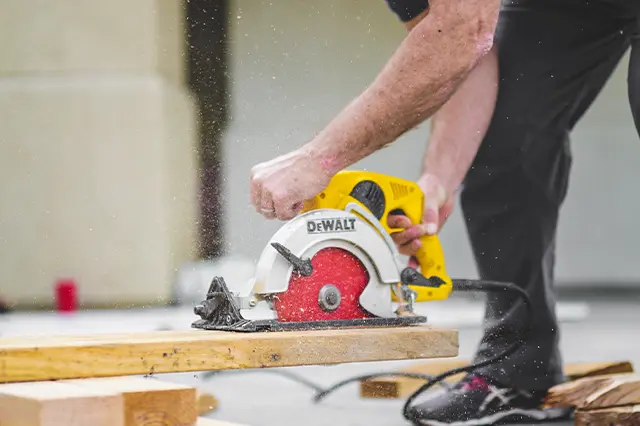Sheetrock Repair: The Basics You Need To Know
When something goes wrong with your sheetrock, you want it fixed as soon as possible. But what do you do when you don’t know how to repair sheetrock? In this post, we will cover the basics of sheetrock repair so that you can get the job done correctly and avoid any future problems. From fixing small tears to more serious structural problems, read on to learn everything you need to know about repairing sheetrock.
Types of Sheetrock Damage
There are a few types of sheetrock damage that home and business owners should be aware of.
-Sheetrock failure: When sheetrock fails, the wallboard may pull away from the studs or joists, creating a hole in the wall.
-Dust explosions: when dust accumulates on sheetrock, moisture can cause an explosive reaction that can damage walls and furniture.
-Water damage: if water penetrates a sheetrock wall, it can cause chemical reactions that destroy the insulation, paint and plaster.
-Heat damage: if the wall is exposed to high temperatures, the sheetrock can start to melt and pull away from the studs.
-Condensation damage: if there is moisture build up on the wall, it can cause the sheetrock to become wet and prone to mold and rot.
-Vandalism: if a wall is damaged in a way that makes it difficult or impossible to repair, the sheetrock may need to be replaced.
If you notice any of the aforementioned sheetrock damage in your home or business, it is important to contact a professional to assess the damage and recommend the best course of action.
How to Fix Sheetrock Damage
There are a few things you can do to repair sheetrock damage. The most common way is to use a patch kit, which includes various adhesive and shims. You will also need a hammer, saw, drill and screws.
To begin, locate the area of the sheetrock that has been damaged. Next, mark the damaged area with a pencil or marker. Then, take the patch kit and unfold it. Find the adhesive that matches your project surface and spread it over the marked area. Cut the adhesive to fit with a knife or scissors and then carefully place it over the pencil or marker marks. Smooth out the adhesive with your fingers until it’s completely covered. Finally, press down firmly on the adhesive to make sure it’s adhered to the wall.
Next, find the screws that match your project surface and unscrew them one at a time using a screwdriver. Once all of the screws are removed, take off any extra pieces of sheetrock coverings that may be hanging off of the adhesive. Now, place fresh screws into their places and tighten them using a screwdriver. Replace any missing pieces of sheetrock coverings and finish by taping down any areas that may have shifted during installation.
If the sheetrock damage is too extensive for a patch kit, you may need to call a professional. In this case, the professional will first remove any damaged sections of sheetrock and then will install new sheetrock in their place.
Tips for Preventing Sheetrock Damage in the First Place
Damage to sheetrock can occur from a number of places, such as water damage, nails hitting the Sheetrock, and even vibrations from appliances or other rooms in the house. Here are a few tips to help prevent damage:
1. Covering Sheetrock: If you notice any water seeping through the cracks in your Sheetrock walls, it’s important to cover them up as soon as possible. A piece of plastic wrap will help keep moisture out, and if there is any visible water damage, you’ll need to replace the Sheetrock. Nails hitting Sheetrock can also cause damage; be sure to put nails into the studs and not into the Sheetrock itself.
2. Installing Sheets of Plywood Over Wall Sections: If you have wall sections that are particularly susceptible to damage (say, because they’re near appliances or windows), installing sheets of plywood over them can help protect them. You may also want to consider using specialty adhesive board (available at hardware stores) to attach sheets of plywood over damaged areas.
3. Reinforcing Walls with Spacing Boards: When you install new Sheetrock, use spacing boards between the individual sheets of drywall so that they don’t push against each other and create points of weakness. This will help prevent further damage from occurring in those areas.
4. Use Certain Adhesives: When attaching panels of Sheetrock together, use adhesives that are specifically designed for this purpose; these adhesives will help to prevent the Sheetrock from coming loose over time.
5. Use the Right Tools: Don’t try to repair Sheetrock damage yourself; instead, call a professional. With the right tools and knowledge, a skilled contractor can quickly and easily fix any damage that’s occurred.
6. Regularly Check for Signs of Damage: Keep an eye out for signs of damage, such as water infiltration or cracks in the Sheetrock. If you notice any of these signs, call a professional to inspect the situation and see if there’s anything that can be done to prevent further damage.
Conclusion
In this article, we have discussed the basics of sheetrock repair, including what kind of materials are used, how to identify and fix common problems, and some tips for avoiding damage in the first place. By understanding the basic concepts behind repairs, you will be able to make informed decisions about when and how to get help. Thanks for reading!

